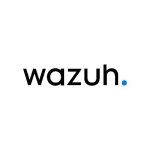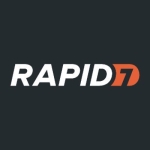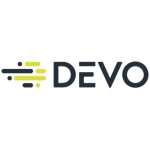We have customized the uses of the platform for our benefit. In general, we use it for failed access attempts, network issues, and allowed/blocked, and we have use cases for platforms such as Windows Server.
We are a service company and partners of various vendors. We provide support to customers. Our strategy is that each piece of equipment sold to customers comes with value-added service, and Securonix protects our customers.
It is an excellent tool that helps us optimize threat-hunting operations, detect intrusive events on the network, and respond to security incidents. It is a tool that helps debug false positives and eliminate noisy alerts. It helps us focus on the alerts that we should take into account for analysis.
Using old, traditional SIEMs did not provide us with the same responsiveness and ability to operate. And if they did provide us with something similar, we needed more staff to review things, event by event. That meant some risky events could occur unnoticed. With Securonix, those issues no longer exist. Securonix shows us information that we must consider as a threat and helps us know when to start an investigation to avoid an incident.
It's very good at adding contextual information to security events. It has reduced the time spent by admins on the dashboard. They can now see information connected to attack risks or even users. The single dashboard alerts them and quickly reports if there is any threat.
It has helped us to better understand what is happening in our network through the indicators of compromise. We have saved days of work. And it optimizes the time that analysts take to review events, compared to other tools that do not have as much intelligence and as many indicators. With Securonix, the information automatically enters and adds intelligence to the indicators. This saves a lot of time that would otherwise be spent reviewing noisy data. It saves our analyst between four and eight hours when analyzing events.
When it comes to advanced threats, it shows us the threats or events that have been detected, with their risk level. It shows us a vulnerability bar and that helps us see who is looking at us, who is trying to deliver certain information to our systems, who exploited us, or if there is any alert due to someone extracting certain information. The automation of information delivery has facilitated everything, saving us three or four days.
For optimization and data analysis, it has a good evaluation engine for repeat offenders and that has helped us to detect, on time, what other basic SIEMs did not detect. Those other solutions needed more time to detect at that same level.
We can customize our use cases with the tools provided by Securonix.
It is an excellent tool that can ingest data in different ways and is very flexible.
Scaling is flexible. If we fall short in terms of EPS, we would simply increase the EPS. And if the RIN server has low resources, as it is a virtual machine we could increase the resources according to the data quantity.
It is an excellent option for the cloud in terms of scalability. It is flexible for both us and our clients. We have plans to increase usage for certain customers.
We used a traditional SIEM where everything was very manual. It did not have threat intelligence or threat hunting of compromises, while Securonix has those features.
We changed because we wanted a good tool to automate certain manual processes so that everything is more flexible. With Securonix, you have the option of integrating with other indicator-of-compromise services, and that helps create a more powerful platform and eliminate false positives.
I started the process of design and continued with onboarding and implementation. The initial implementation was simple, but we had some delays because we had new solutions and we had to create new templates. But in general, if you have traditional solutions that have a template, it is easy to implement. It would take a week.
As for our implementation strategy, the tool that we had previously had a forwarding functionality, so what we did was deploy information to the RIN and, from there, sent the information to the cloud. After that, we created a pipeline and sent the rest of the events so that we could take the previous SIEM out of production.
The sources took a month to incorporate. It took us a month to get access to the teams because we do not manage certain teams. It was a bureaucratic process.
Securonix does the maintenance. It doesn't require work from us. They send us emails indicating that the system is going to have a brief reboot and it takes a short amount of time.
We hired an onboarding engineer from Securonix who helped us with the implementation of the RIN. He explained the process to us until we understood everything.
Our experience with the onboarding engineer was good. He helped us with any questions we had and followed up through emails.
For the implementation of Securonix, we only needed one person from our side. I was the point of contact with our other areas.
The pricing is fine compared to the market but I think that at some point the competitors will catch up on price. It would be good if, for example, there were an option to offer customers who have used the solution for more than a year some kind of additional trial or service.
There is no cost outside of the standard licensing fee, other than an initial installation service charge. Otherwise, there is simply a monthly cost for the service.
We were thinking about Splunk, QRadar, and Rapid7. One of the drawbacks of those systems would be the infrastructure. Many of the other platforms, including McAfee, need boxes or deployment servers in our infrastructure or our clients' infrastructures and, in many cases, the infrastructure is growing continuously.
With Securonix, that does not happen. It is a cloud solution that only requires a small deployment server with low resources, depending on how many events are received. And all that information is stored in the cloud as well.
The cost, compared to other solutions, is better.
Compared to other platforms, it is very simple yet, at the same time, it is very efficient because it packs information into a glance. After that, it gives you the option of hunting threats and that can be initiated on the dashboard.
It is very intuitive. A person who has a certain notion of cyber security can move quickly since it gives you information about any attack. It gives you a summary and it gives you links to receive information. And if you don't have much knowledge of the tool, you can always take the courses that are free on the web. Doing so helped us understand the solution.
This is a solution that will help you a lot in hardware processing and in optimizing the time it takes to review events, which is what admins often spend their time doing.
There are things on the network that you can't see with traditional tools. There are tools that don't give you the visibility that Securonix gives you.
Foreign Language:
(Spanish)
¿Cuál es nuestro caso de uso principal?
Hemos personalizado los usos de la plataforma para nuestro beneficio. En general, lo usamos para intentos de acceso fallidos, problemas de red y permisos/bloqueos, y tenemos casos de uso para plataformas como Windows Server.
Somos una empresa de servicios y socios de varios proveedores. Brindamos soporte a los clientes. Nuestra estrategia es que cada equipo vendido a los clientes venga con un servicio de valor agregado, y Securonix protege a nuestros clientes.
¿Qué es lo más valioso?
Para optimización y análisis de datos tiene un buen motor de evaluación de reincidentes y eso nos ha ayudado a detectar, a tiempo, lo que otros SIEM básicos no detectaban. Esas otras soluciones necesitaban más tiempo para detectar al mismo nivel.
Podemos personalizar nuestros casos de uso con las herramientas proporcionadas por Securonix.
Es una excelente herramienta que puede ingerir datos de diferentes maneras y es muy flexible.
¿Por cuánto tiempo he usado la solución?
He estado usando Securonix Next-Gen SIEM durante un año aproximadamente.
¿Qué opino de la escalabilidad de la solución?
El escalado es flexible. Si nos quedamos cortos en términos de EPS, simplemente aumentaríamos el EPS. Y si el servidor RIN tiene pocos recursos, al ser una máquina virtual podríamos aumentar los recursos según la cantidad de datos.
Es una excelente opción para la nube en términos de escalabilidad. Es flexible tanto para nosotros como para nuestros clientes. Tenemos planes para aumentar el uso para ciertos clientes.
¿Cómo son el servicio de atención al cliente y el soporte?
El soporte es excelente. A nivel de servicio nos atienden rápido. Contamos con una persona de post venta que da seguimiento en algunos casos. También puede ver los tickets y puede escalar algo según la urgencia.
¿Cómo calificaría el servicio y soporte al cliente?
Positivo.
¿Qué solución usé anteriormente y por qué cambié?
Usamos un SIEM tradicional donde todo era muy manual. No tenía inteligencia de amenazas o búsqueda de amenazas de compromisos, mientras que Securonix tiene esas características.
Cambiamos porque queríamos una buena herramienta para automatizar ciertos procesos manuales para que todo sea más flexible. Con Securonix, tienes la opción de integrarte con otros servicios de indicadores de compromiso, y eso ayuda a crear una plataforma más poderosa y eliminar los falsos positivos.
¿Cómo fue la configuración inicial?
Comencé el proceso de diseño y continué con la incorporación e implementación. La implementación inicial fue simple, pero tuvimos algunos retrasos porque teníamos nuevas soluciones y tuvimos que crear nuevos modelos. Pero, en general, si tiene soluciones tradicionales que tienen un modelo creado, es fácil de implementar. Tardaría una semana.\
En cuanto a nuestra estrategia de implementación, la herramienta que teníamos anteriormente tenía una funcionalidad de reenvío, entonces lo que hicimos fue desplegar información al RIN y de ahí enviamos la información a la nube. Después de eso, creamos una canalización y enviamos el resto de los eventos para que pudiéramos sacar de producción el SIEM anterior.
Las fuentes tardaron un mes en incorporarse. Nos tomó un mes tener acceso a los equipos porque no administramos ciertos equipos. Fue un proceso burocrático.\
Securonix hace el mantenimiento. No requiere trabajo de nosotros. Nos envían correos electrónicos que indican que el sistema se reiniciará brevemente y normalmente no tarda mucho.
¿Y el equipo de implementación?
Contratamos a un ingeniero de incorporación de Securonix que nos ayudó con la implementación del RIN. Nos explicó el proceso hasta que entendimos todo.
Nuestra experiencia con el ingeniero de incorporación fue buena. Nos ayudó con cualquier pregunta que tuviéramos y nos dio seguimiento a través de correos electrónicos.
Para la implementación de Securonix, solo necesitábamos una persona de nuestro lado. Yo era el punto de contacto con nuestras otras áreas.
¿Cuál fue nuestro Retorno de Inversión?
Donde vemos nuestro mejor retorno de la inversión es en el tiempo y la mano de obra que ahorramos. Antes de Securonix, nuestro personal tenía que investigar eventos constantemente. Ahora, un ingeniero con algo de experiencia es suficiente para acelerar las cosas y dar tiempo al resto de los administradores para hacer otras cosas.
¿Cuál es mi experiencia con los precios, el costo de configuración y las licencias?
El precio está bien en comparación con el mercado, pero creo que en algún momento los competidores alcanzarán el precio. Sería bueno que, por ejemplo, hubiera una opción para ofrecer a los clientes que han utilizado la solución durante más de un año algún tipo de servicio adicional.
No hay ningún costo fuera de la tarifa de licencia estándar, aparte de un cargo por servicio de instalación inicial. De lo contrario, simplemente hay un costo mensual por el servicio.
¿Qué otras soluciones evalué?
Estábamos pensando en Splunk, QRadar y Rapid7. Uno de los inconvenientes de esos sistemas sería la infraestructura. Muchas de las otras plataformas, incluida McAfee, necesitan cajas o servidores de implementación en nuestra infraestructura o en las infraestructuras de nuestros clientes y, en muchos casos, la infraestructura crece continuamente.
Con Securonix, eso no sucede. Es una solución en la nube que solo requiere un pequeño servidor de implementación con pocos recursos, dependiendo de cuántos eventos se reciban. Y toda esa información también se almacena en la nube.
El costo, en comparación con otras soluciones, es mejor.
Comparado con otras plataformas, es muy simple pero, al mismo tiempo, es muy eficiente porque empaqueta la información en un vistazo. Después de eso, le da la opción de cazar amenazas y eso puede iniciarse en el tablero.
Es muy intuitivo. Una persona que tiene cierta noción de ciberseguridad puede moverse rápidamente ya que te da información sobre cualquier ataque. Te da un resumen y te da enlaces para recibir información. Y si no tienes mucho conocimiento de la herramienta, siempre puedes tomar los cursos que están gratis en la web. Hacerlo nos ayudó a comprender la solución.
¿Qué otro consejo tengo?
Esta es una solución que ayudará mucho en el procesamiento de hardware y en la optimización del tiempo que lleva revisar los eventos, que es a lo que los administradores suelen dedicar su tiempo.\
Hay cosas en la red que no puedes ver con las herramientas tradicionales. Hay herramientas que no te dan la visibilidad que te da Securonix.




















